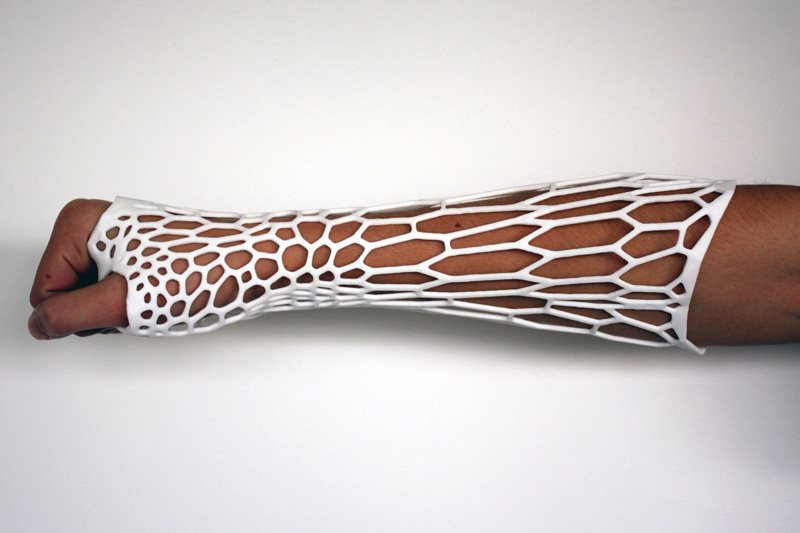3D printing for the medical industry
What are the medical applications for 3D printing?
Medical 3D printing covers various medical applications, from 3D bioprinting to custom-made casts and tailored prosthetics or orthotics.
3D bioprinting opens the door to on-demand organ creation including cartilage and skin. With 3D printing, it could be soon possible to produce replacement organs or limbs. Even bone implants can be 3D printed.
Medical 3D printing also encompasses the production of personalized casts made of lightweight plastic and fitting the patient perfectly.
Finally, 3D printing is used to create customized prosthetics and orthotics. Using additive manufacturing technologies, the production costs of such medical devices are drive down, making them more affordable for the masses.
3D bioprinting
Bio 3D printing is the creation of biological tissue and organs through the layering of living cells, using a 3D bioprinter.
3D bioprinting is a contraction of “biological printing”. It is a recent and promising medical technique that involves creating tissues with the help of a 3D bioprinter, which prints a sort of scaffold in which stem cells are deposited. The potential applications can range from creating replacement organs to fabricating human tissues or specific prosthetics.
However, this medical 3D printing technology still has a long way to go before we can 3D print a fully functional replacement organ or limb. For now, bioprinting is mostly used in medical and biological labs to create samples of biological tissues used in drug testing and experimentations.
3D printed prosthetics and orthotics
Medical 3D printing is used to create cost-effective and highly customized prosthetics and orthotics. A prosthetic is an artificial device that replaces a missing body part, which may be lost as the result of an injury, a disease, or a congenital condition. An orthotic is an external device used to modify the structural and functional characteristics of the neuromuscular and skeletal system.
Put simply, orthotics assist a deficient function of the body, while prosthetics replace a missing body part. Prosthetics and orthotics are a great fit for 3D printing because they are often made of plastic and they must be tailor-made to fit each patient.
With 3D printing, it is now possible to produce affordable 3D printed prosthetics, a small revolution in the medical industry.
For children, which can quickly outgrow their prosthetics, 3D printing is a very cost-effective option. Indeed, instead of having to buy new sets of prosthetics as they grow bigger, parents or doctors can just print larger prosthetic parts. It is even possible to use a personal 3D printer for this purpose, depending on the prosthetic part’s complexity.
For an even better fit, the disabled limb or remaining stump can be captured in 3D with a 3D scanner.
A few examples of initiatives to promote 3D printed prosthetics: Open Bionics is a project which aims to create low-cost robotic hands for amputees, researchers, and hobbyists all across the world. This Wired article also describes the design process of the Exo prosthetic leg, a 3D printed leg prosthetic.
3D printed casts
Medical 3D printing is used to produce plastic casts that are lightweight and custom-made to perfectly fit the patient. 3D printing, a cost-effective technique to produce customized objects, is a great option for the creation of medical casts.

In 2013, Jake Evill, a UK designer, produced the first 3D printed cast, called the Cortex exoskeletal. The Cortex cast is generated based on the X-ray and 3D scan of a patient. This cast provides highly localized support around the trauma zone. The 3D printed cast is also ventilated, very lightweight, hygienic, and recyclable. It can even go under the shower!
In 2014, Deniz Karasahin, a Turkish student, created the Osteoid: a 3D printed cast that incorporates ultrasonic technology to accelerate the bone healing process. Combining a 3D printed cast with low-intensity pulsed ultrasound (LIPUS), the Osteoid is like an enhanced cast designed to speed up the healing process.
 English
English  Français
Français

